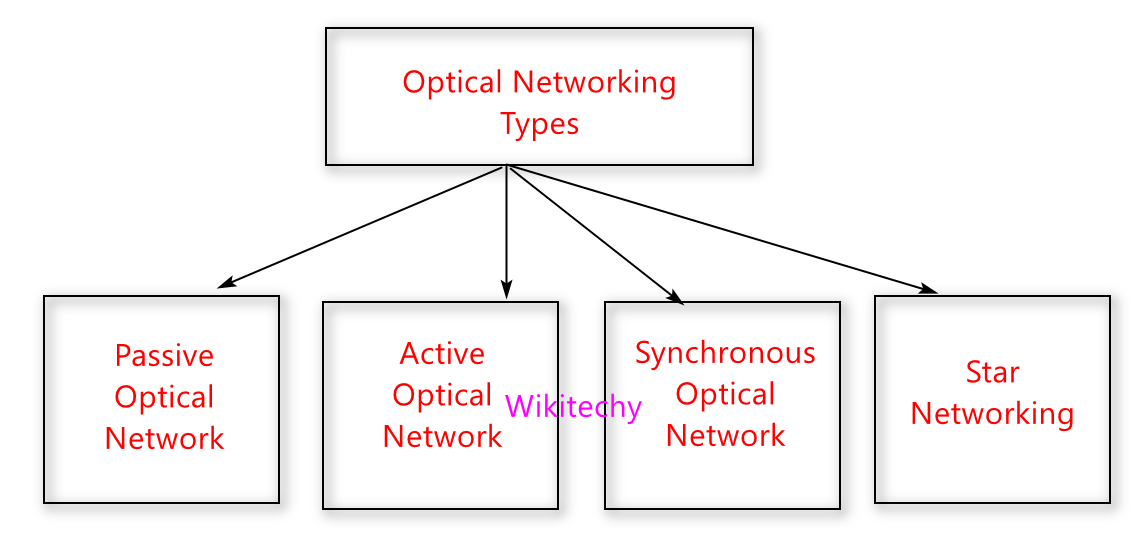What is Optical Network ?
What is Optical Network ?
- An optical network is a type of data communication network built with optical fiber technology.
- It utilizes optical fiber cables as the primary communication medium for converting data and passing data as light pulses between sender and receiver nodes.
- An optical network is also known as an optical fiber network, fiber optic network or photonic network.

- There are various types of optical networking

Table Of Content
-
- Passive Optical Network
- Active Optical Network
- Synchronous Optical Network
- Star networking
Passive Optical Network
- This type of optical networking in which only single stand of fiber optics can take part and build a connection between the multiple computer networking clients from different areas is called as the passive optical networking.
- But some times customers complained that it can lower the rate of internet connection.

Active Optical Network
- Active optical network relies on electrically powered network equipment to distribute the signal, such as a switch or router.
- Usually, the data need optical-electrical-optical transformation in the Active optical network.
- Each signal leaving the central office is directed only to the customer for whom it is intended.

Synchronous Optical Network
- This type of optical networking that deals with the data transmission is the synchronous optical networking.
- In this case optical networks can screen that all the data related to the information can pass easily from one place to another.
- It is more effective then the physical networking. It also observes the type of data; the type of data should be of one form and can be relayed properly.
Star networking
- Networking carried out with the help of star networks is called as the star networking.
- Star networks deals with connection between the main computer systems to the other multiple computers over the network.
- They are also able to enhance the performance of the connection’s an the network.

How it Works ?
- The optical networking depends upon the different components used in the optical networks such as the fiber optical cables.
- In optical networking with the help of fiber optics user scan deliver the date between two points at higher speed with similar to that of the light.
- Core is the main source of transmission in the optical networking. These cores are packed in a special type of layer which maintains the light signals in it. This wrapping also prevents the light to move outward from the cores of fiber optics.
- This step really prevents the data losing during transmission. According to this optical networks works on large distances and facilitate the users at long areas.
Why use Optical Networking
- Optical networks have three important attributes:
- speed,
- range,
- capacity.
- Optical networking reduces latency between endpoints on the network. Where an electric current moves data at about 10% of the speed of light around 18,600 miles per second or 30,000 kilometers per second optical signals in fiber optic cable travel 10 times faster, at the speed of light 186,000 miles per second or 300,000 kilometers per second.
- Optical networks can also move more data across a cable at longer distances: Using electronics and copper, speeds top out at around 100 Gbps over short distances.
- Fiber can move data at 100 Gbps over a single data channel and across multi-kilometer distances and even further with amplification.
- Even greater speeds can be obtained by dividing a single optical cable into multiple data channels.

